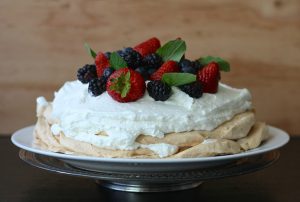 Boxed cake mixes are so convenient.
Boxed cake mixes are so convenient.
For most, they are a quick, inexpensive, tasty way to create a fun treat for a birthday party or other celebratory event.
In fact, box cake mixes were created in the 1930s but really became popular after World War II.
The idea was to give housewives a quick and easy way to make a cake in between cooking meals and taking care of kids and the house.
Boxed cake mixes actually were not that popular when they first came out due to the fact that many housewives did not see the value in something they didn’t create themselves.
To change this perception, companies required that fresh eggs be added to box mixes.
Now, all of a sudden, these housewives would have the convenience of a pre-made mixture yet maintain the sense of pride that would come with adding some fresh ingredients.
On the surface, it seems like the perfect combination, but when you examine the ingredients in most box cake mixes and the frostings that typically accompany them, you find that no one should take pride in consuming these products.
Boxed Cake Mixes
While there is slight variation amongst brands, most box mixes have similar ingredients.
Hydrogenated oils
Hydrogenated oils are created when liquid unsaturated fats are chemically altered by the addition of hydrogen in order to make them solid.
In the process, trans fats are created.
Naturally occurring trans fats (in meat and dairy products) are not harmful in small amounts; the issue comes when these trans fats are mostly consumed through these processed, hydrogenated oils.
The addition of these fats into cakes, pastries and pies is intended to lengthen their shelf life.
This may seem like a great idea at first, but when you consider the fact that hydrogenated oils are believed to be linked to a greater chance of heart disease, it’s not as wonderful as it seems.
Be aware that foods labeled “trans fat-free” may not genuinely be free of trans fats.
In the US, a food may be labeled “trans fat-free” if there are less than 0.5 grams of trans fats in one serving, and since many boxed foods contain far more than one serving per box, you may likely be getting more trans fats than you think.
Enriched Bleached White Flour
It is no secret that even though white flour is enriched with certain vitamins and minerals, it does not have nearly the amount of nutrition as its manufacturers would have you believe.
White flour is typically bleached with harmful chemicals (like chlorine bleach—gross!) in order to remove a specific part of the grain.
It is a simple carbohydrate that quickly converts to sugar in your body, and because it is usually the main ingredient in boxed cake mix, it is a significant reason that boxed mix is unhealthy.
Artificial Colors
Common artificial colors include Yellow and Red dyes.
There has been significant debate around artificial colors for many years and some countries in Europe have even banned the use of them, but the United States still allows for these additives in our food.
Some studies have linked artificial dyes to behavioral issues, especially in children.
Considering the fact that boxed cake mixes are frequently used for children’s parties, these dyes should be avoided at all costs.
Artificial Flavors
Anytime you see the words “artificial flavors” on a food package, you should immediately put it back on the shelf! These flavors are synthetically made, and since most companies won’t tell you the source of these “flavors”, you will be left wondering where exactly these flavors are coming from.
Oftentimes, artificial flavors are various forms of MSG as well.
Artificial Sweeteners
When artificial sweeteners first hit the market, they seemed like a great alternative to high-calorie regular sugar.
After research studies examined the effects in labs rats and found some scary side-effects of long-term use, questions arose about whether these sweeteners were worth the risk.
Sucralose, aspartame, neotame and erythritol are just some of the most popular artificial sweeteners used today.
They are typically created from corn, soy or sugar beets, the majority of which are genetically modified.
Propylene glycol and other emulsifiers
Emulsifiers are used to bind ingredients that might not naturally mix (for example, oil and water).
Propylene glycol is an additive approved for use by the FDA in food, but did you know that it is listed as a toxic substance by the Agency for Toxic Substances and Disease Registry? It is also found in antifreeze, acrylic paint, brake fluid, tile grout, shoe and floor polishes and tire sealant.
Be on the lookout for this ingredient in your food as repeated exposure may cause irritation.
Mono- and diglycerides are other emulsifiers used to help preserve a food’s shelf life.
Oftentimes, you will not know the source of these ingredients as they can come from animals (typically a pig or cow), a vegetable (usually canola or soybean oil) or may be synthetically created.
Knowing the source could be important for those who have certain allergies, are vegan or have some other specific need, but if you can’t find out what the source is, avoid these emulsifiers.
Aluminum
Believe it or not, aluminum has been found in commercial birthday cakes.
With well-documented connections to neurodevelopmental problems like Alzheimer’s disease, autism, Parkinson’s disease, dementia, and other issues like breast cancer and muscle fatigue, aluminum ingredients (aluminum maltol in some chocolate cake mixes) may be enough to avoid the box mixes all together.
This heavy metal is among the most common and prevalent heavy metals on earth, so daily exposure may come from numerous sources.
Some of these may be avoided and others may not be avoided so it is important to help yourself by being aware of where you are being exposed.
If you can skip aluminum exposure from boxed cake mixes by simply making your own cake mix at home, you will be doing yourself and your family a huge favor in the long-run.
Frosting
The canned frosting that typically comes with a box mix or is advertised to be paired with a box mix is usually full of dangerous ingredients as well.
These usually contain various hydrogenated oils, artificial coloring and flavors and may have a significant amount of added sugars and/or artificial sweeteners.
Basically, canned frosting is a can of chemicals.
What can you do?
For quick reference, here are some popular cake mix brands to avoid:
Duncan Hines Classic Yellow Cake Mix
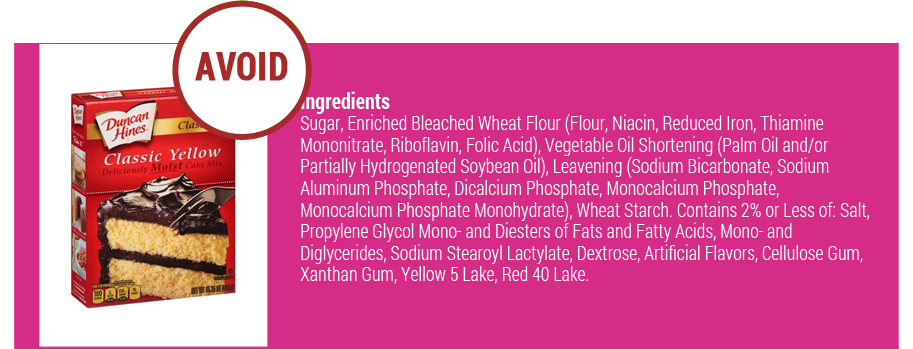
Jiffy Golden Yellow Cake Mix
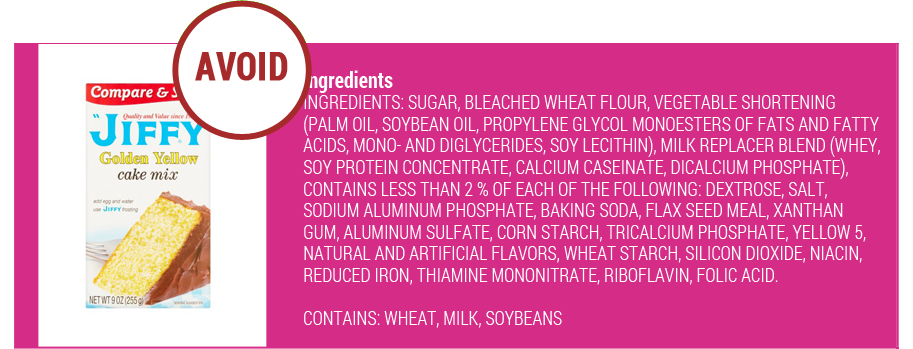
Betty Crocker Favorites Super Moist Yellow Cake Mix
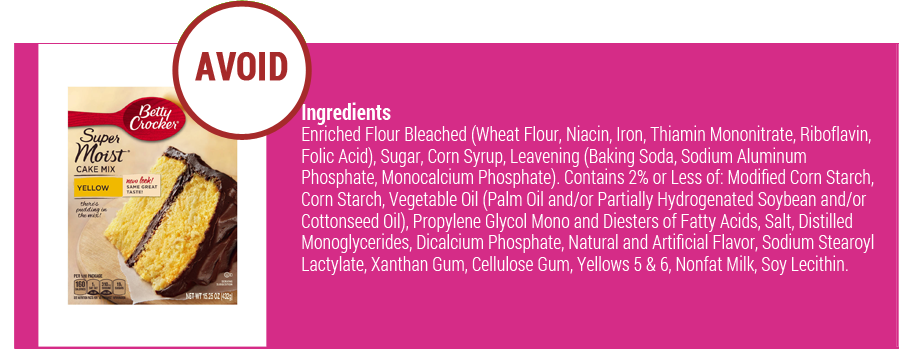
Duncan Hines Moist Deluxe French Vanilla Cake Mix
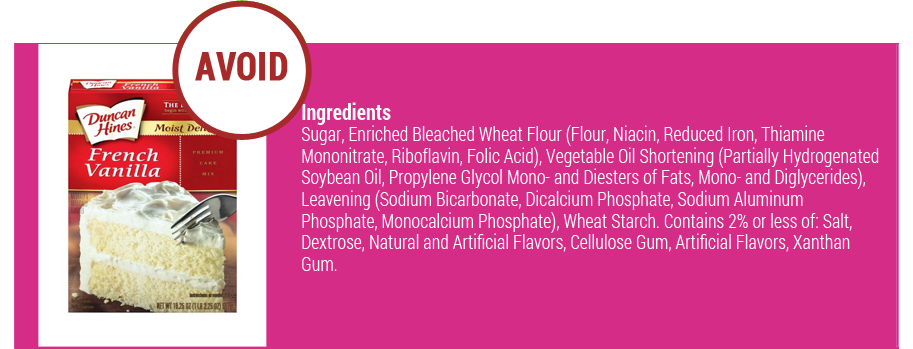
Pillsbury Sugar-Free Classic Yellow Cake Mix
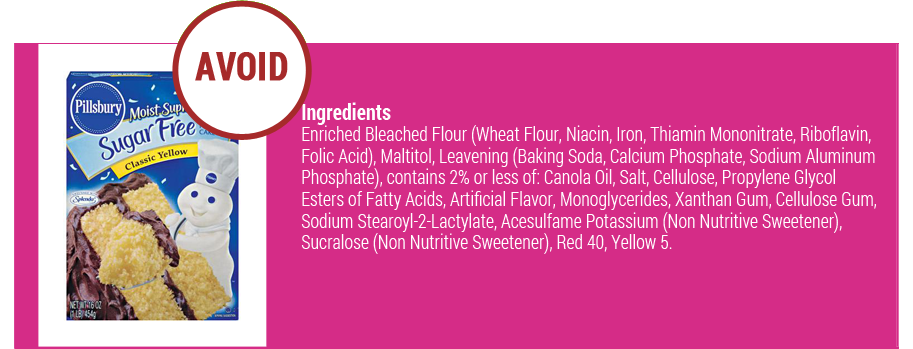
Pillsbury Moist Supreme Yellow Premium Cake Mix
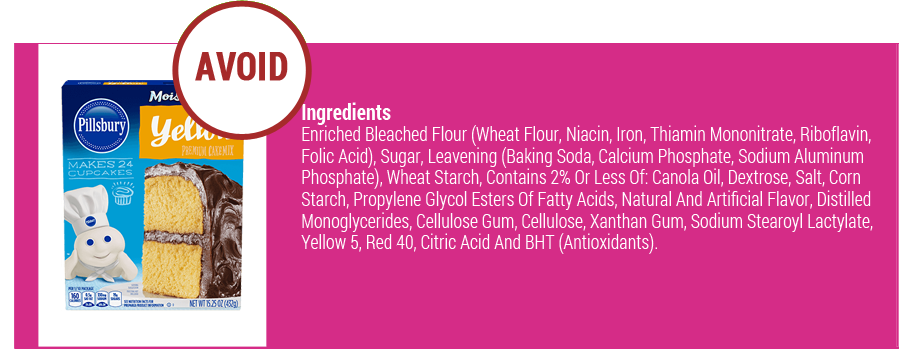
Betty Crocker Super Moist Favorites Vanilla Cake Mix
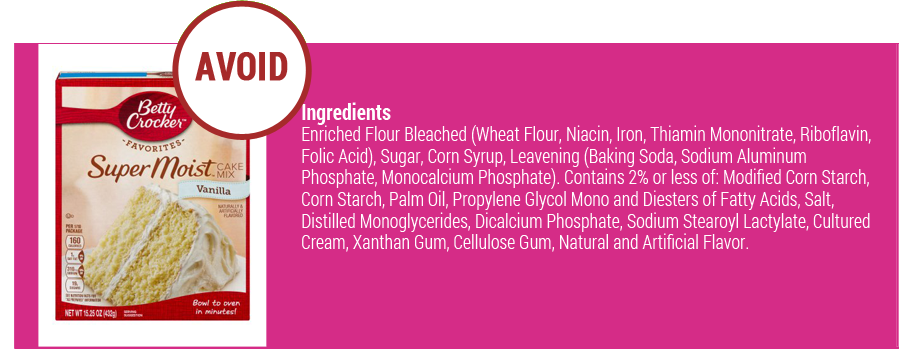
Krusteaz Organic Yellow Cake Mix

If you are going to treat yourself or your family or friends to a cake, do yourself a favor and take the extra time and effort to bake a cake from scratch.
You will know exactly what ingredients are going into your cake and won’t have the need for all of the preservatives and additives found in box mixes.
While a homemade cake should still be treated as a “treat”, you will be far more comfortable knowing you avoided so many harmful ingredients found in ready-made mixes and frostings.
Using the above cake mix and frostings can increase your risk of cardiovascular diseases. If you have high cholesterol or heart issues, go to the next page and learn what you can do to protect your heart.
About the Author:
Emma Deangela is the best selling author of The Alkaline Diet Program and 80/20 Fat Loss. She has helped over tens of thousands of men and women to lose weight and transform their health with sound nutrition advice. Learn how you can lose weight fast – How to lose weight by adding these alkaline foods.
Have you used any of the above cake mix or frostings?
Please share with your friends this article on “Cake-mix and Frostings” – Use any of the social media and email buttons on the left of our website.
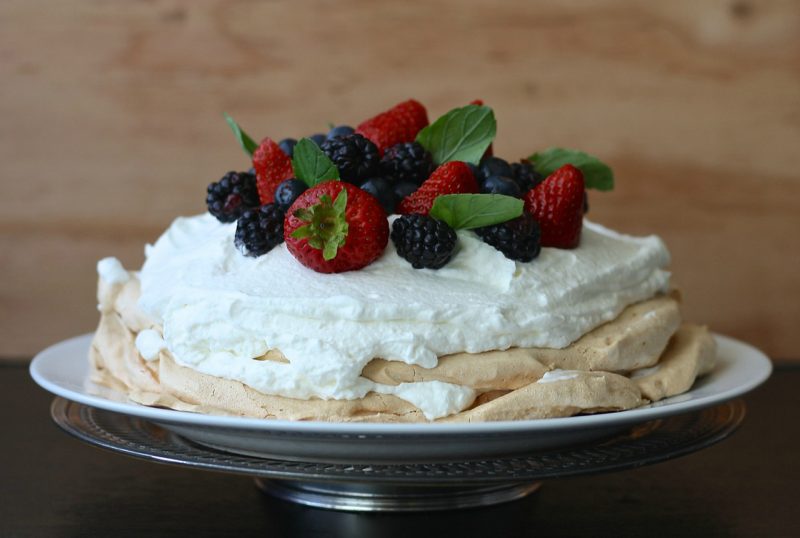

Leave a Reply